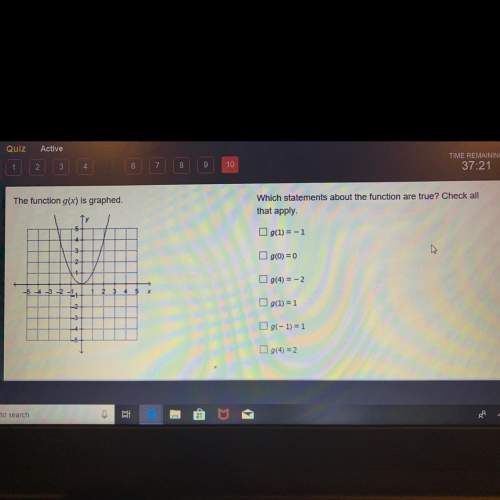
Mathematics, 04.04.2020 03:29 tamera62
Mali performed an experiment with a standard deck of 52 cards. She wanted to see if the face cards (Ace, King, Queen, and Jack) came up the expected number of times when she randomly selected 13 cards from the deck. A 3-column table with 4 rows. Column 1 is labeled Card with entries ace, king, queen, jack. Column 2 is labeled Theoretical (predicted frequency) with entries 1, 1, 1, 1. Column 3 is labeled Experimental (Observed frequency) with entries 0, 1, 1, 0. Mali noticed that the observed frequencies did not match the predicted frequencies. What does she need to change in her experiment to get closer to the predicted values based on the theoretical probability for all the face cards?

Answers: 2


Another question on Mathematics

Mathematics, 21.06.2019 19:10
How many different three-digit numbers can be formed using the digits 1 comma 2 comma 9 comma 6 comma 4 comma 3 comma and 8 without repetition? for example, 664 is not allowed.
Answers: 1

Mathematics, 21.06.2019 21:30
Are the corresponding angles congruent? explain why or why not.
Answers: 2

Mathematics, 21.06.2019 22:00
18 16 11 45 33 11 33 14 18 11 what is the mode for this data set
Answers: 2

Mathematics, 22.06.2019 02:10
Which pair of expressions is equivalent? a 7(1–k)and7–k b 7(1–k)and1–7k c 7(1–k)and7–k d 7(1–k)and7–7k
Answers: 1
You know the right answer?
Mali performed an experiment with a standard deck of 52 cards. She wanted to see if the face cards (...
Questions




Mathematics, 05.05.2021 19:30


Social Studies, 05.05.2021 19:30

Mathematics, 05.05.2021 19:30



Biology, 05.05.2021 19:30




Computers and Technology, 05.05.2021 19:30




Mathematics, 05.05.2021 19:30





